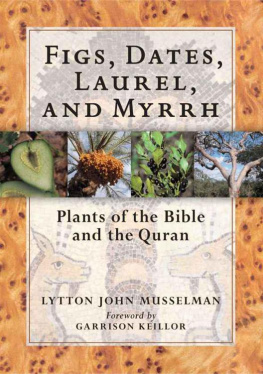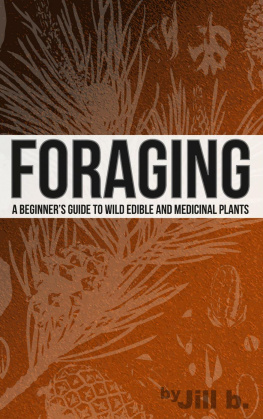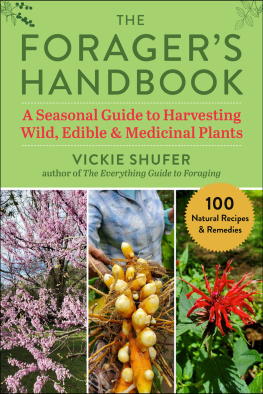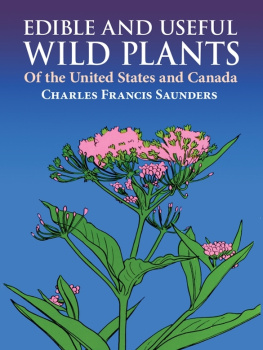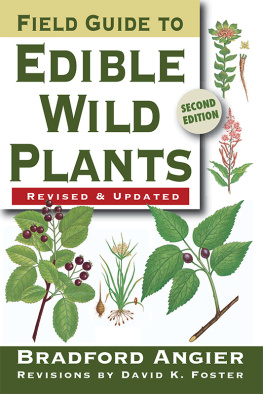THE QUICK GUIDE TO
Wild Edible Plants

THE QUICK GUIDE TO
Wild Edible Plants
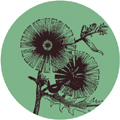

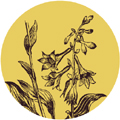
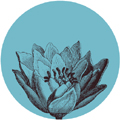
LYTTON JOHN MUSSELMAN and HAROLD J. WIGGINS

Disclaimer. To the best of the authors knowledge, the information in this book is accurate; however, there are risks associated with consuming or using wild plants, and any person who chooses to consume or use wild plants does so at their own risk. The authors and publisher take no responsibility for any such risk undertaken on the basis of information contained in this book. If there is any doubt whatsoever about the identity, edibility, or safety associated with the use of a particular plant or plant part, do not ingest or use it.
2013 The Johns Hopkins University Press
All rights reserved. Published 2013
Printed in China on acid-free paper
9 8 7 6 5 4 3 2 1
The Johns Hopkins University Press
2715 North Charles Street
Baltimore, Maryland 21218-4363
www.press.jhu.edu
Library of Congress Cataloging-in-Publication Data
Musselman, Lytton J.
The quick guide to wild edible plants : easy to pick, easy to prepare / Lytton John Musselman and Harold J. Wiggins.
pages cm
Includes index.
ISBN 978-1-4214-0871-2 (hdbk. : alk. paper) ISBN 1-4214-0871-6 (hdbk. : alk. paper) ISBN 978-1-4214-0872-9 (electronic) ISBN 1-4214-0872-4 (electronic)
1. Wild plants, EdibleEast (U.S.) 2. Cooking (Wild foods)East (U.S.) I. Wiggins, Harold J., 1953 II. Title.
QK98.5.U6M87 2013
641.303dc23 2012027071
A catalog record for this book is available from the British Library.
Special discounts are available for bulk purchases of this book. For more information, please contact Special Sales at 410-516-6936 or specialsales@press.jhu.edu.
The Johns Hopkins University Press uses environmentally friendly book materials, including recycled text paper that is composed of at least 30 percent post-consumer waste, whenever possible.
Book design by Kimberly Glyder
Acknowledgments
With any project that extends over many years, there are numerous people to acknowledge for their help and support. We thank Bill and Denise Micks, Mike Hicks, Jennifer Alexander, Rick and Beth Blanton, Mary Hauffe, Sally Knight, and Jodie Wiggins.
We are thankful for the support of our colleagues at Old Dominion University and the Army Corps of Engineers for their insight and helpful criticism. Among these are David Knepper, J. Paul Minkin, and Peter Schafran. Lloyd Hitchings aided with camera use.
Several generations of students have enthusiastically munched, gagged, enjoyed, and endured tasting various concoctions we have prepared. However, no undergraduates were harmed in these experiments.
Peter Schafran and David Cutherell critically read earlier drafts and improved the manuscript, and they suggested some recipes. However, any errors are ours alone.
We appreciate the cooperation of various landowners who allowed access to their property, as well as the staff and resources of the Eastern Shore National Wildlife Refuge; Great Dismal Swamp National Wildlife Refuge; Rappahannock National Wildlife Refuge; Upper Mississippi River National Wildlife Refuge; Au Sable Institute of Environmental Studies, Michigan; CranberryLakeBiologicalStation, NewYork;FirstLandingStatePark, Virginia; Kiptopeke State Park, Virginia; Merchants Millpond State Park, North Carolina; Lake Phelps State Park, North Carolina; Pike Peaks State Park, Iowa; Wyalusing State Park, Wisconsin; Crows Nest Natural Area Preserve, Virginia; and Loriella County Park, Virginia.
The research reported in this book would not have been possible without the support of the Hogan Endowment, which we gratefully acknowledge.
Our spouses and children have been a constant source of support and encouragement.
THE QUICK GUIDE TO
Wild Edible Plants



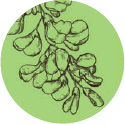
Introduction
WILD PLANTS AS FOOD
ABOUT FIFTY BOOKS ON EDIBLE PLANTS covering most of North America are currently in print. Is another one needed? Many of these books emphasize the obvious food from plants, such as berries and nuts; some require considerable preparation and added ingredients when cooking. In some the recipes use main ingredients like sour cream or some other component that masks the flavor of the wild plants. Others draw on lore and purported uses, especially from Native Americans. Still others describe edible plants but give little indication of usable yield. While we include some of the best-known wild foods, as well as their indigenous uses, we believe our book is unique. Perhaps quirky best describes it.
This book deals with some of the most common plants of the Middle Atlantic states and the Northeast, many of which are underutilized. It is not a comprehensive treatment of edible plants in this region. Rather, this book tells the reader where, when, and how to locate and prepare plantsboth native and introducedand plant products overlooked or neglected by other sources. Both native and introduced wild plants are included. We have been guided by several general principles in the selection of plants.
First and foremost, the plants included are easy to identify and do not have any toxic look-alikes. Its also important to learn which plants cause dermatitis and poisoning. That is why we have included descriptions of poison ivy, poison oak, and poison sumac, as well as some of the most toxic plants, so they can be avoided. Second, plants to be collected must be common (not rare or threatened), so that collecting them will not be detrimental to their survival. Third, preparation must be simple, requiring readily available equipment and no more than three components per recipe. (Okay, we cheat on some recipes but only a few.) Last, we have drawn upon the use of plants in other cultures.
During our fieldwork we have nibbled, chewed, boiled, and baked any plant that is not documented as life threatening. We have also studied many plants reported in the literature to be edible but found them unpalatable, low yielding, or both. In many cases students have also eaten their way through the landscape with us. However, we dont recommend unbridled foraging for anyone without a working knowledge of the local flora, especially of rare and endangered plants.
Next page

